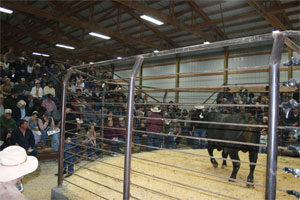Beef cow slaughter in 2011 was 15 percent higher than the previous 5-year average and was caused largely by severe -- and in some cases record setting -- drought in the Southern Plains.
But cow prices were buoyed by strong demand for manufacturing grade cow beef and lower beef imports.
Higher cow prices in 2012 are the result of lower cow slaughter and continued strong demand for 90 percent lean boneless beef, despite the lean fine textured beef (LFTB) controversy and discovery of another U.S. cow with BSE.
For the year, total cow slaughter has been down about 1.5 percent. However, declines in recent weeks have been higher with April cow slaughter reported down 8.7 percent.
All the decline in cow slaughter has come from the beef cow sector, with beef cow slaughter down about 2.5 percent for the year compared to dairy cow slaughter up almost 1 percent. In April, beef cow slaughter was down 18.5 percent with dairy cow slaughter up about 3 percent.
Reduced cow slaughter for the rest of the year would be supportive to prices. What are the prospects for that?
Dairy cow slaughter may remain above last year's levels for several months as increased milk production is pressuring prices. Beef cow slaughter levels will be dependent on rainfall in key cattle producing regions.
U.S. pasture and range conditions recently reported by USDA-NASS and compiled by LMIC indicated 17 percent of pastures and ranges in poor and very poor condition compared to 24 percent last year at this time and the five year average of 17.6 percent.
The most improved region is the Southern Plains where 27.5 percent of pasture and range was reported as poor and very poor compared to 63 percent last year and a 5-year average of 24.4 percent.
By mid-summer last year, severe drought caused a 95 percent poor and very poor rating in the Southern Plains. Both the Southeast and Western regions now have worse ratings than last year and conditions there will need to be watched closely.
The heavy beef cow culling that occurred the last several years, and stronger calf prices, point to continued reduced beef cow slaughter as long as Mother Nature cooperates with adequate rainfall.
Cow prices usually decline seasonally after mid-summer and that can be expected again this year. But the magnitude of the decline will certainly be impacted by cow slaughter levels. ![]()
—From Livestock Marketing Information Center
PHOTO
Mid-summer declines in cow prices may be less severe in 2012 if beef cow slaughter numbers are also reduced. Photo by Progressive Cattleman staff.









